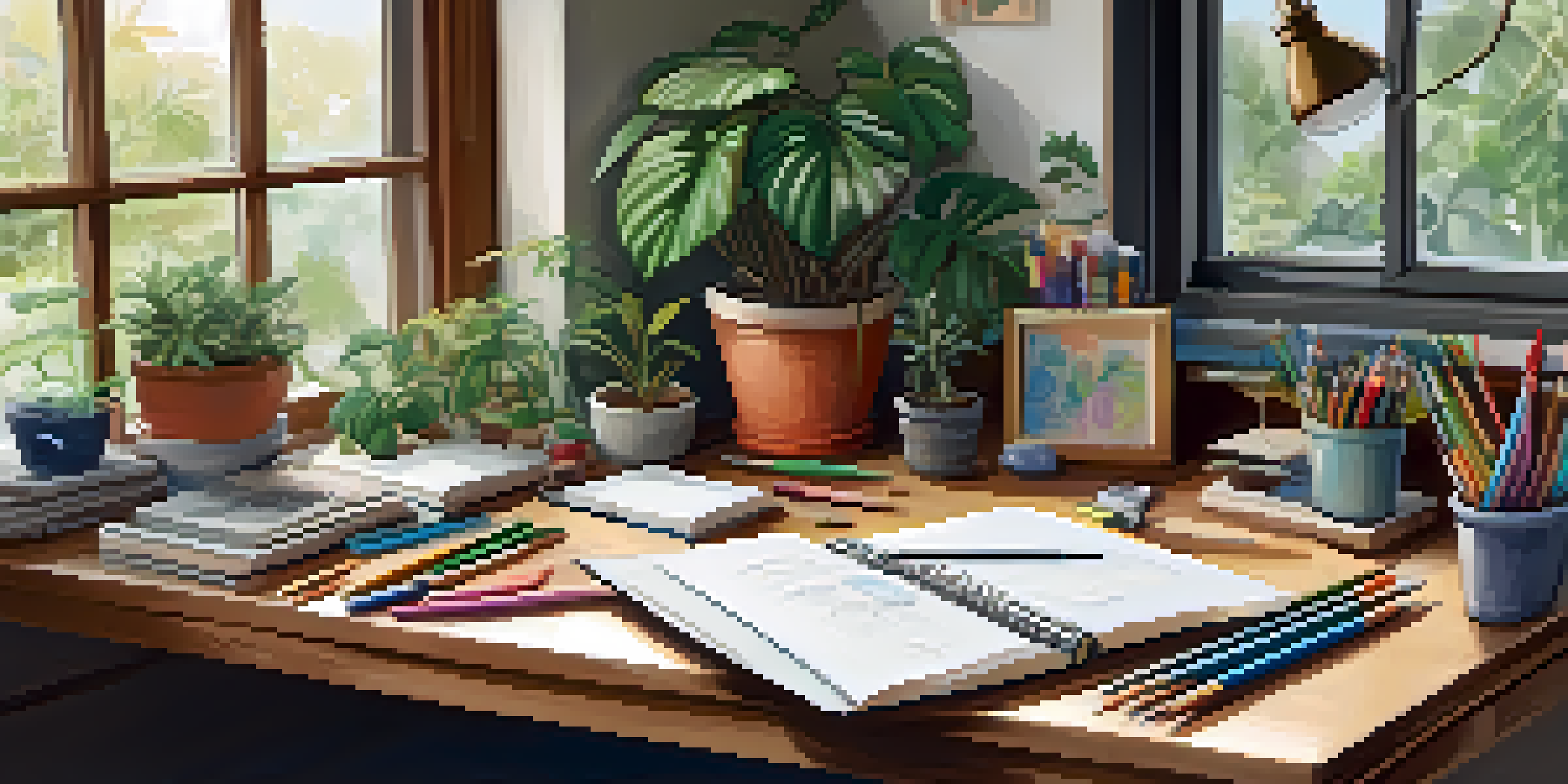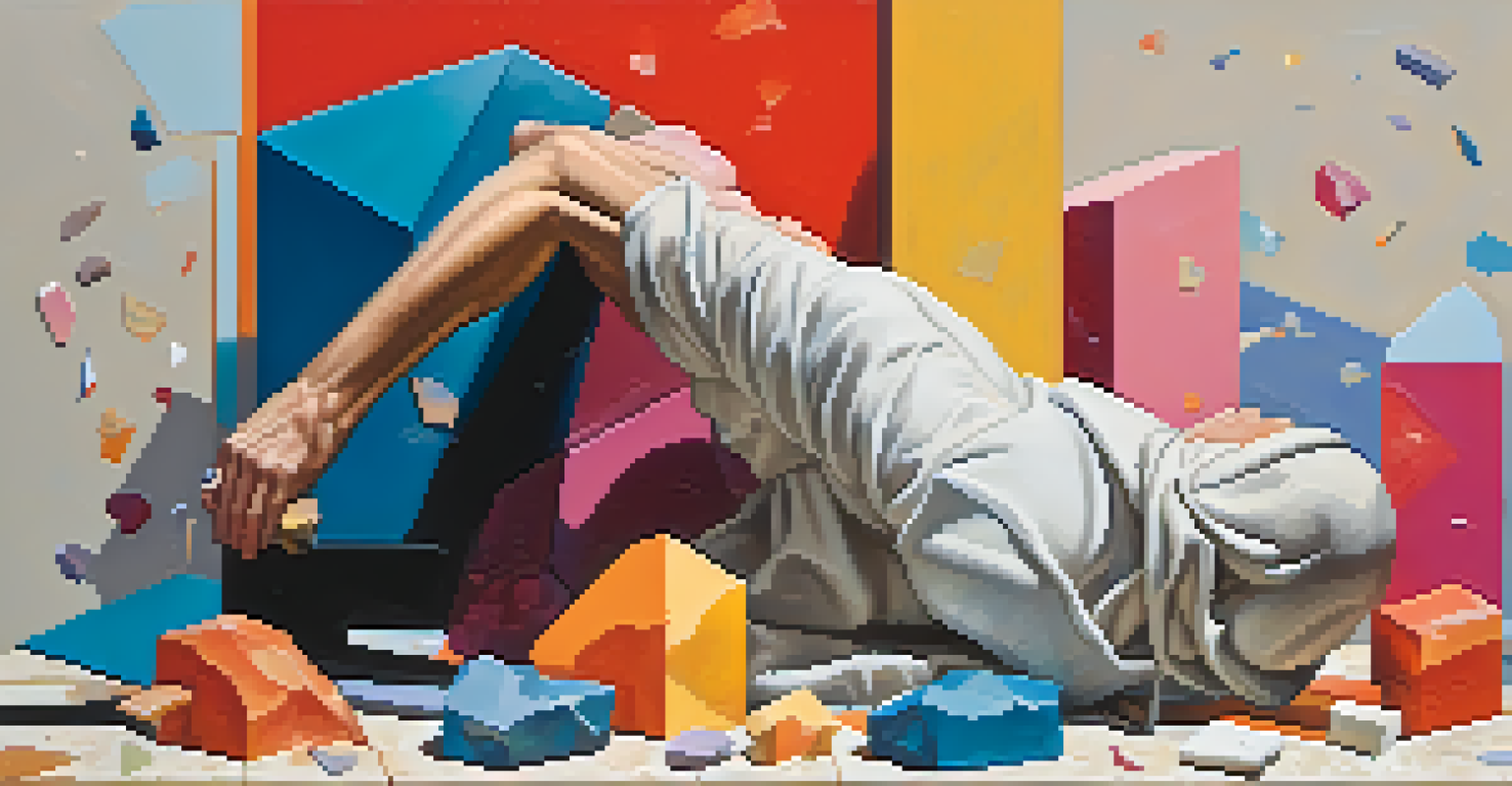Failure and Innovation: How Setbacks Drive Creativity

Understanding the Connection Between Failure and Creativity
At first glance, failure may seem like the opposite of success, but it often serves as a crucial stepping stone in the creative process. When we stumble, we are forced to rethink our approaches, leading to innovative ideas that we might not have considered otherwise. Think of it like a puzzle: sometimes, the piece you think fits perfectly just doesn’t, prompting you to explore new configurations and solutions.
I have not failed. I've just found 10,000 ways that won't work.
Many renowned innovators, like Thomas Edison, faced countless setbacks before achieving their breakthroughs. Edison famously remarked that he hadn't failed but rather discovered 10,000 ways that wouldn't work. This mindset illustrates how embracing failure can lead to significant insights and ultimately pave the way for success.
By reframing how we perceive failure, we open ourselves up to a world of possibilities. Instead of viewing setbacks as dead ends, we can see them as opportunities for growth and creativity, encouraging a culture that values experimentation over perfection.
Learning From Famous Failures in Innovation
History is filled with examples of innovators who experienced significant failures before achieving success. Take the case of J.K. Rowling, whose Harry Potter manuscript was rejected by multiple publishers before finally finding a home. Her determination and perseverance in the face of rejection not only shaped her career but also inspired millions around the globe.

Similarly, Steve Jobs was ousted from Apple, the very company he co-founded, only to return later and revolutionize the industry. His setbacks taught him invaluable lessons about leadership and innovation, ultimately leading to groundbreaking products like the iPhone and iPad. These stories remind us that failure doesn't define us; how we respond to it does.
Failure Fuels Creative Growth
Embracing failure as a learning opportunity encourages innovative thinking and exploration.
By studying the journeys of these innovators, we can glean insights into the importance of resilience and adaptability. Their experiences show that sometimes, the most profound innovations emerge from the lessons learned during our lowest moments.
The Role of Risk-Taking in Creative Processes
Creativity often thrives in environments where risk-taking is encouraged. When individuals feel safe to experiment and fail, they are more likely to push boundaries and develop unique solutions. This is akin to a child playing with building blocks; they are free to create and destroy without fear of judgment, leading to endless possibilities.
It is fine to celebrate success, but it is more important to heed the lessons of failure.
In contrast, a fear of failure can stifle creativity, causing individuals to stick to what they know rather than exploring new avenues. This can lead to stagnation and missed opportunities for innovation. In many ways, embracing risk is like planting seeds in a garden; not every seed will sprout, but those that do can lead to a vibrant and flourishing landscape.
Organizations that foster a culture of risk-taking often see a boost in creative output. By encouraging team members to experiment and learn from their setbacks, they cultivate an environment where innovation can flourish.
Creating a Safe Space for Innovation to Thrive
Establishing a safe space for creativity and innovation involves creating an environment where individuals feel comfortable sharing their ideas without fear of criticism. This can be achieved through open communication, team-building exercises, and a focus on collaboration. When people feel valued and heard, they are more likely to contribute their unique perspectives.
For example, companies like Google have implemented policies that encourage employees to spend a portion of their time on personal projects. This approach not only fosters creativity but also allows for experimentation without the pressure of immediate success or failure. It demonstrates that innovation often arises from unexpected places.
Risk-Taking Enhances Creativity
Creating a safe environment for experimentation allows individuals to take risks, leading to unique solutions.
A supportive environment allows individuals to embrace failure as a natural part of the creative process. When setbacks are viewed as learning opportunities rather than punishable mistakes, the entire team is empowered to innovate fearlessly.
Embracing Failure as a Learning Tool
Failure can be one of the best teachers, providing invaluable lessons that can inform future endeavors. By analyzing what went wrong and why, individuals and teams can develop strategies to avoid similar pitfalls in the future. This reflective process transforms setbacks into powerful learning experiences.
Consider the approach of many successful entrepreneurs who regularly assess their failures and iterate on their ideas. This practice of continuous learning allows them to refine their concepts, ultimately leading to more innovative solutions. It's a cycle of growth that can drive remarkable progress.
By actively embracing failure as a learning tool, we shift our perspective from one of fear to one of opportunity. This mindset encourages individuals to take calculated risks and pursue creative ventures, knowing that each setback brings them closer to success.
The Psychological Benefits of Accepting Setbacks
Accepting failure can have profound psychological benefits, including reduced stress and increased resilience. When we accept that setbacks are a part of the journey, we free ourselves from the paralyzing fear of making mistakes. This shift in mindset allows us to tackle challenges with a sense of curiosity and openness.
Moreover, acknowledging that everyone experiences failure can foster a sense of solidarity and community among peers. Sharing stories of setbacks and recovery can strengthen relationships, leading to a more supportive and collaborative environment. It's much like sharing a laugh over a shared misadventure—there's comfort in knowing we're not alone.
Setbacks Strengthen Resilience
Accepting setbacks promotes psychological well-being and fosters a supportive community among peers.
Ultimately, fostering a healthy relationship with failure can lead to greater overall well-being. As we learn to view setbacks as opportunities for growth, we cultivate a mindset that champions creativity and innovation.
Conclusion: The Transformative Power of Failure
In conclusion, failure and innovation are deeply intertwined, each driving the other in a cycle of growth and creativity. By embracing setbacks as part of the creative journey, we unlock new avenues for inspiration and problem-solving. Just as a sculptor chisels away at a block of marble, revealing beauty through each strike, we too can discover our most innovative ideas through the lessons learned from our failures.
As we reflect on the stories of great innovators and the importance of creating safe spaces for experimentation, it becomes clear that the path to success is rarely linear. Instead, it is often filled with twists, turns, and unexpected detours that ultimately lead us to greater heights.

So, the next time you face a setback, remember that it might just be the catalyst for your next big idea. Embrace it, learn from it, and let it guide you on your creative journey.